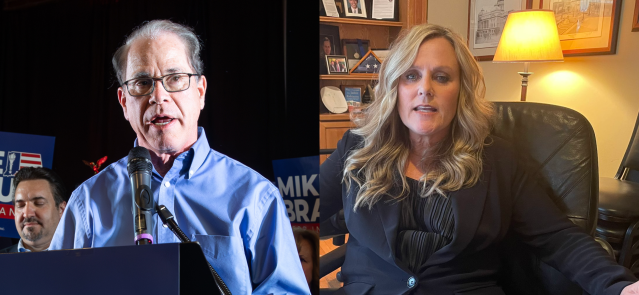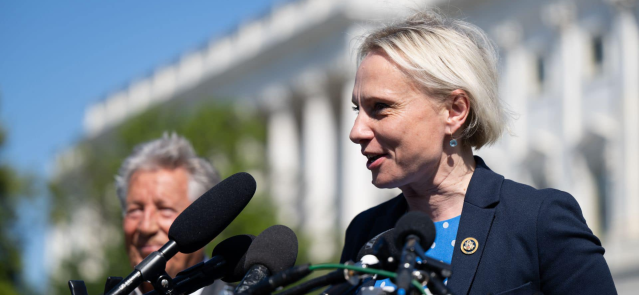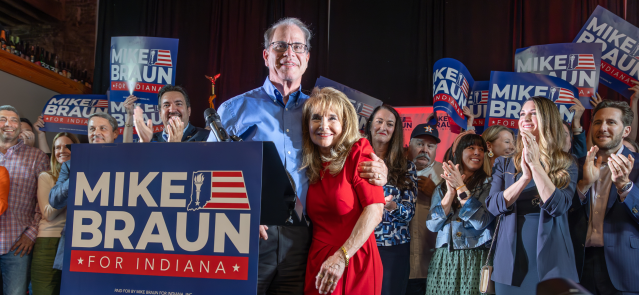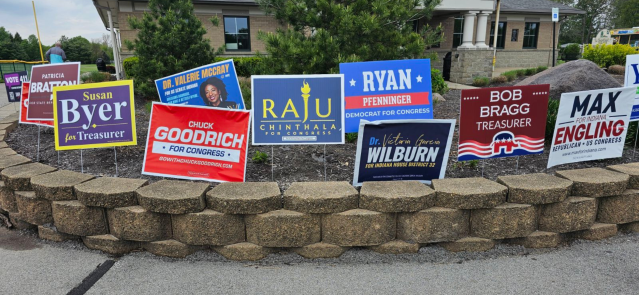Stay ahead of the curve as a political insider with deep policy analysis, daily briefings and policy-shaping tools.
Request a DemoQ&A: Indiana energy development director on electric bills, efficient appliances and new programs
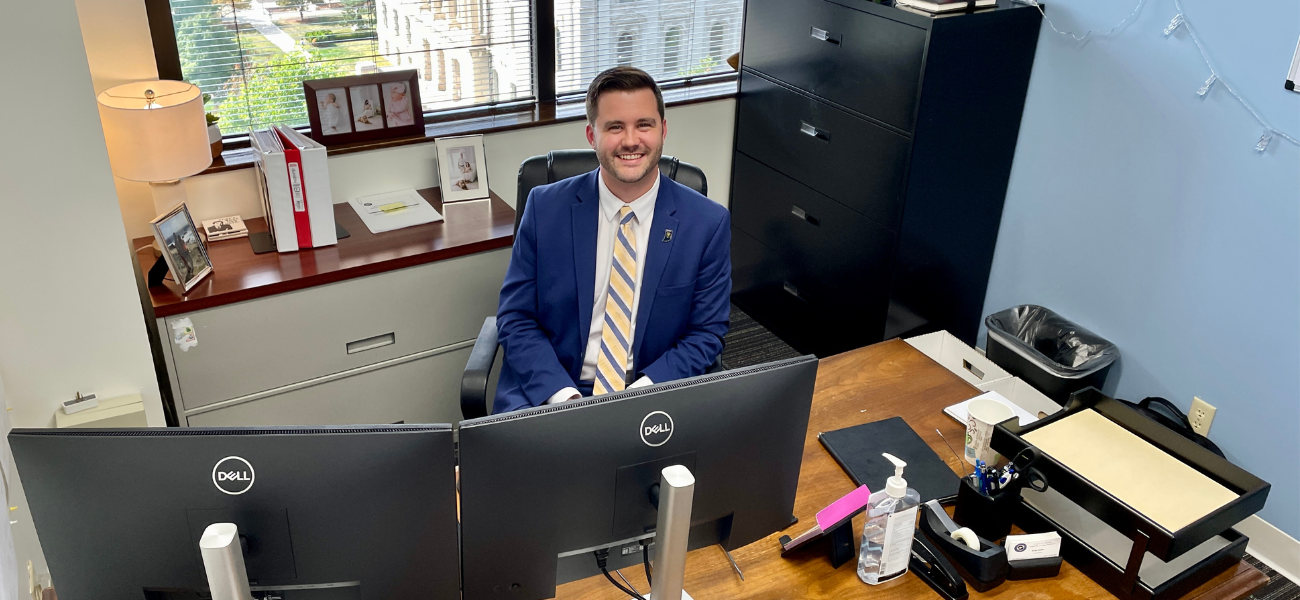
Ryan Hadley, executive director of the Indiana Office of Energy Development, sits in his office at One North Capitol in Indianapolis on Sept. 28, 2023. (Credit: Ryan Martin)
- Hoosiers can take steps now to help lower their electric bills over the winter
- Choosing the right appliance can make a big impact on monthly electric bills
- Several new and expanding programs will help residents upgrade their appliances and homes for energy efficiency
After graduating from University of Southern Indiana, Ryan Hadley didn’t know much about utility bills or the electric grid.
“The only thing I knew about energy and electricity was that when I flipped that switch, the light better come on,” Hadley, 30, told State Affairs, “and if it didn't, I had a problem.”
His knowledge would grow while working nearly seven years as a staff employee for the Indiana Utility Regulatory Commission, which is tasked with reviewing requests made by electric utility companies. By the end of his time there, Hadley oversaw legislative and media relations as the executive director of external affairs.
Then in January 2022, Gov. Eric Holcomb appointed Hadley as executive director of the Office of Energy Development. The nine-person office provides policy guidance to Holcomb, state lawmakers and other state agencies. It also serves as the point for receiving U.S. Department of Energy funding and distributing it to Indiana residents.
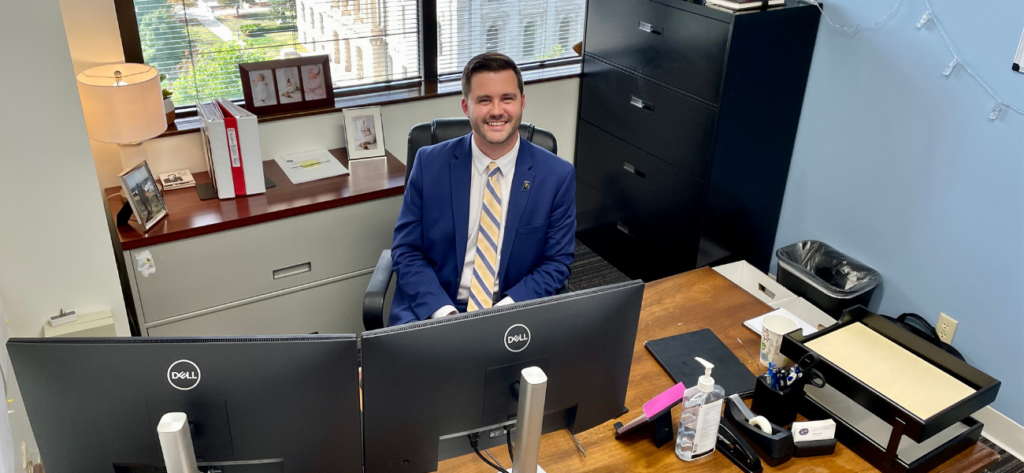
For years, that responsibility amounted to essentially one federal grant (called the U.S. State Energy Program) that resulted in about $1 million a year to help local energy projects, such as an upgrade to LED lighting in a county library or the purchase of flexible fuel vehicles for sheriff’s departments.
Now, though, new federal programs are driving a dramatic increase in funding that flows through the office — jumping to an anticipated $230 million over the next several years.
In an interview with State Affairs, Hadley provided some tips for residents hoping to cut back on their energy usage (and lower their bills), and he described new federal and state programs that can help pick up the costs.
The conversation is edited for clarity, brevity and length.
Q. How can people lower their electric bills this winter?
A. The usage is the primary factor for energy bills. A lot of our programs are geared toward helping customers manage their usage. I like to often say the cheapest kilowatt is the one you never consume.
Folks right now could take some steps to ensure that if there's any leaky doors, or drafty windows, to seal those as best they can. Maintaining your thermostat at a little lower level than maybe what you normally would will also help. Weather is a really big factor in energy usage and energy bills. Obviously, the hotter it is or the colder it is, the more energy you're going to use because your system is running more.
Q. How can people know which appliances are using too much electricity?
A. A really good logo that hopefully most people are familiar with is the Energy Star program. Whenever you're looking at a new appliance, look for that Energy Star logo. That means that it is a highly efficient appliance. Usually your biggest energy suckers in a home are going to be your HVAC system, water heater, washer and dryer.
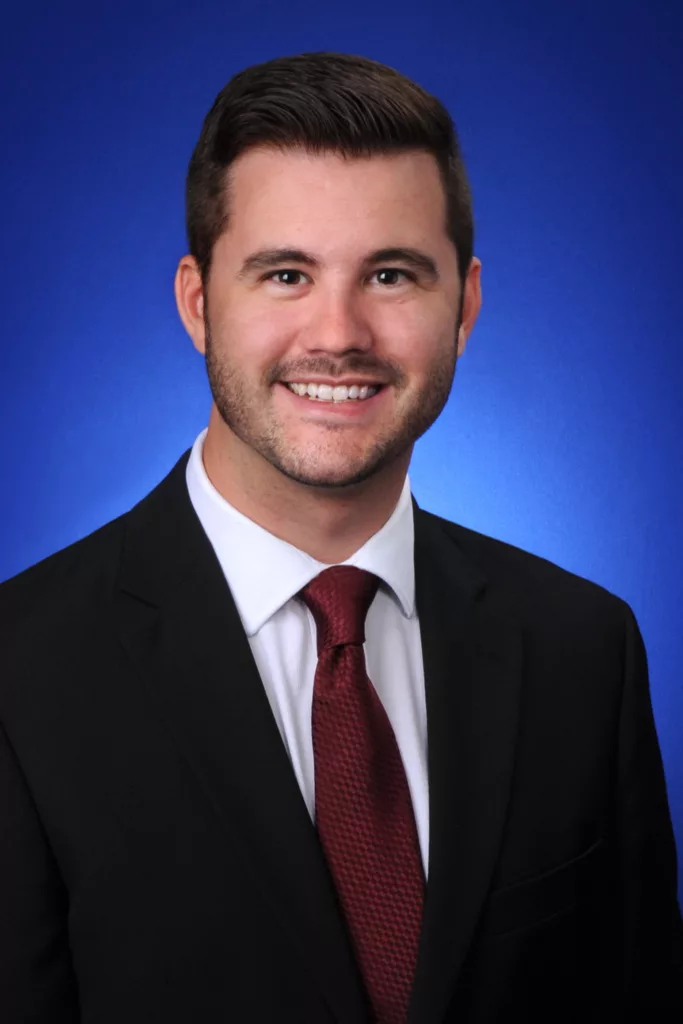
Q. How do our individual decisions on efficiency affect the electric grid?
A. We're seeing a lot of new technologies and innovative technologies that require either interconnection with the electric grid, or it's just more stuff that folks are going to be plugging in at home in their outlets. And so that is going to require energy. The electric system itself is built to serve that peak load. So if we grow that peak load with more things being plugged in — and all that being plugged in at once — the utilities will have to build their infrastructure to meet that peak demand. So the more that we can reduce that need for investment in new infrastructure, and the more that customers can spread out that load over the period of a day, the less likely utilities will need to invest more money and more infrastructure to meet new demand.
Q. What are some of the ways that your office helps local communities?
A. We actually funded a few communities just earlier this year through our base funding to help them with energy security planning at the community level. In addition to that, we received $9.5 million through the U.S. State Energy Program. And as part of that, we plan to allocate a significant portion to develop holistic community energy grants. That will be coming likely next year: Essentially, providing a competitive solicitation process where communities can holistically think about energy in their community, and then share their plan with the Office of Energy Development. And these will be high dollar awards in the amount of somewhere like half a million to a million dollars per award. We intend to be quite broad, because we don't want to tell communities how to use these funds. We want the communities to tell us how they want to use them.
The second program that I would talk about directly for communities is the Energy Efficiency and Conservation Block Grant program. There was funding allocated to it under the Bipartisan Infrastructure Investment and Jobs Act. Indiana received a $2.4 million formula allocation. I believe there was another $4 million that was allocated to about 37 Indiana cities and towns directly from the federal government. The purpose really is for local units of government to upgrade their public buildings: doing retrofits, energy efficiency work, solar panels, whatever the communities may want to do with that. We're going to disperse 60% of the allocation that the state received to communities through a competitive solicitation process — and only to the smaller communities that did not receive formula allocations from the federal government. So we want to hit those that are not big enough to receive that federal allocation.
We want a statewide impact for all these programs. These are federal taxpayer dollars at the end of the day, Hoosiers paid into them and so we want to make sure that we reinvest these dollars back home in Indiana, and across the state.
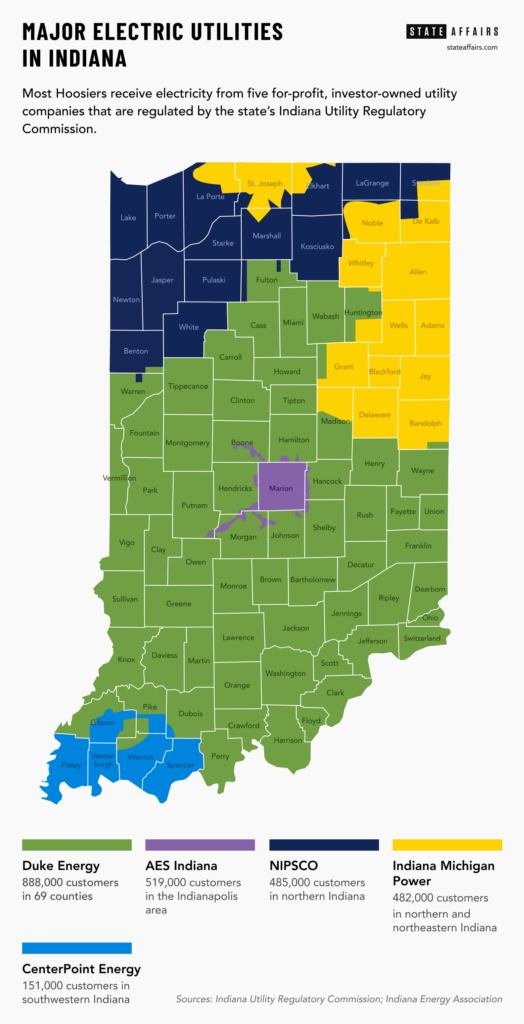
Q. How else will you use that $9.5 million?
A. We submitted our application to the federal government for the Energy Efficiency Revolving Loan Fund. The remainder of that money — which is roughly around $6.2 million or so — we're going to be partnering with financial institutions around the state to provide an opportunity for customers to finance larger energy efficiency investments through a lower-than-market interest rate. This helps customers who may not be able to just pay right out of pocket for a new HVAC system that they need.
It'll require an energy audit. Energy audits are typically given through utility programs, and we also plan to have a list of qualified energy auditors that they could choose from as well as part of our program. So if the energy audit comes back and says these investments will save you money over the life of that asset, then those would be eligible for investment by this program. What we don't want to do is invest in or have folks finance equipment, that they don't see a return on investment and that the asset will have to be replaced before they would actually be paying off that loan. We are targeting roughly the second quarter of next year.
Q. What else should Hoosiers know about the influx of federal funding?
A. Indiana was allocated $182 million in the Home Energy Rebate Program. And the purpose is to upgrade homes, both the infrastructure and then also providing rebates and discounts for folks to purchase energy efficient appliances. So that's a significant amount of money that's coming to the state.
We have submitted what we call an early application that allows us to receive a little bit of the administrative funds so that we can build our capacity here internally, and then design and develop those programs to be ready to operationalize and deliver to the state. So that's going to take some time. They're very complex programs. But we hope that the programs will be ready sometime in the middle of next year, that folks can take advantage of to help them with retrofits to their home, and then also to purchase energy efficient appliances.
Q. Is there anything else people should know?
A. There's a lot of opportunity. We encourage folks to visit our website regularly. We have a listserv where folks can sign up for email notifications on all of these programs. You know, a lot of these programs are not yet developed. We're in the process of building them and so we really hope 2024 is going to be the year that most of these programs become available for customers to participate.
Contact Ryan Martin on X, Facebook, Instagram, LinkedIn, or at [email protected].
Facebook @stateaffairsin
Instagram @stateaffairsin
LinkedIn @stateaffairs
Read this story for free.
Create AccountRead this story for free
By submitting your information, you agree to the Terms of Service and acknowledge our Privacy Policy.
How McCormick, Braun view abortion, taxes and other key issues
A Democrat-turned-Republican and Republican-turned-Democrat will soon face off in the race to become Indiana’s next governor.
Sen. Mike Braun, who voted as a Democrat prior to 2012, captured the Republican nomination in Tuesday’s primary. Jennifer McCormick, formerly a Republican Superintendent of Public Instruction, will represent the Democrats.
Voters will decide the state’s next chief executive in November.
A State Affairs analysis of the candidates’ campaign platforms and public statements found key differences — and a few similarities — in their planned approaches to a variety of issues impacting Hoosier voters.
Here is how they match up.
Abortion
Braun: As a senator, Braun has long supported abortion restrictions.
In 2020, he called for the Supreme Court to re-examine Roe v. Wade.
In 2023, he proposed federal legislation that would have required parental notification before any unemancipated minor could seek an abortion. He said at the time: “Hoosiers put their trust in me to stand up for the unborn, and that’s what I’ve been proud to do every day in the Senate.”
He has since signaled support for the state’s abortion ban. His platform reads: “State lawmakers must work to ensure the gains we have made to protect life are secured and strengthened.”
McCormick: In a Tuesday interview with State Affairs, McCormick said her candidacy represented a referendum on reproductive rights.
“I’m going to fight to restore those rights under any authority I can, working in a bipartisan fashion, using our committees, board and our agencies. I also know, too, what everybody’s fear is: that they’re [Republicans] not going to restore those rights and will take [restrictions] further.”
From her platform: “Indiana’s Republican-led extreme abortion ban has taken away the right of women to make deeply personal decisions regarding their own health care.”
Marijuana
Braun: At a March 26 Republican primary debate, Braun suggested an openness to legalizing medicinal marijuana.
“It’s gonna hit all of us. I’m gonna listen to law enforcement — they have to put up with the brunt of it,” he said. “Medical marijuana is where I think the case is best made that maybe something needs to change. But I’ll take my cue from law enforcement there as well. … I hear a lot of input where [medical marijuana is] helpful, and I think that you need to listen and see what makes sense.”
McCormick: The Democrat’s platform also addresses medical marijuana legalization, while speculating on possible recreational use.
“We will fight for the legalization of medical marijuana as a source of state revenue established on a well-regulated marketplace and monitored by a Cannabis Task Force in order to study the issues, opportunities and potential obstructions associated with recreational marijuana legalization.”
McCormick said she would also support expunging low-level marijuana-related convictions.
Taxes
Braun: At a March 19 National Federation of Independent Business forum, Braun said the state’s property tax system “went out of whack because it couldn’t respond to inflation like we’ve never seen before.”
“The way you finance any lower taxes would be to bank on the government being run more efficiently,” he said.
His platform also calls for government spending cuts to finance lower taxes: “Reducing the size of government is the key to cutting taxes, and Mike Braun will work through every state agency to find ways to save money while delivering high-quality services to taxpayers.”
McCormick: McCormick also spoke about taxes at the March 19 forum.
“I agree with a revamp of our taxing system,” she said. “But also it’s about not just how we’re getting our revenue, it’s about our expenditures. Yes, we need to fix our gas tax. Yes, we need to look at the income tax. But here’s the thing: There are hidden taxes we’re not having a conversation about.”
Her platform also references the possibility of combining state agencies as a way to save money.
Education
Braun: In his platform, Braun supports broadening school choice and parental rights.
“As a former school board member, Mike Braun knows parents are the primary stakeholders in their children’s education and every family, regardless of income or zip code, should be able to enroll in a school of their choice and pursue a curriculum that prepares them for a career, college or the military,” the platform reads.
Braun also pledged to ensure critical race theory and discussions about gender are banned in public schools.
McCormick: Education is one of McCormick’s primary issues, according to her platform.
She calls for the elimination of statewide testing, increased early childhood reading and child care options and a minimum base salary of $60,000 for all K-12 teachers.
McCormick also addresses the state’s school choice movement.
“We will call for a pause in the expansion of school privatization efforts while requiring fiscal and academic accountability and transparency for all of Indiana schools that receive public tax dollars,” her platform reads.
U.S.-Mexico border
Braun: Braun’s television ads have touched on border security, and his platform calls for increased focus on the area.
“Joe Biden and the left have created a humanitarian and national security crisis on our southern border,” the platform reads. “As governor, Mike will continue to support and enact the America First policies that were working. Otherwise, every town will become a border town.”
McCormick: McCormick’s border-related plans are more focused on facilitating legal immigration.
“We will work with local, state and federal officials in supporting an immigrant system that creates a safe, timely, orderly and humane pathway for those seeking legal immigration while keeping our communities and those responsible for border security safe,” her platform reads.
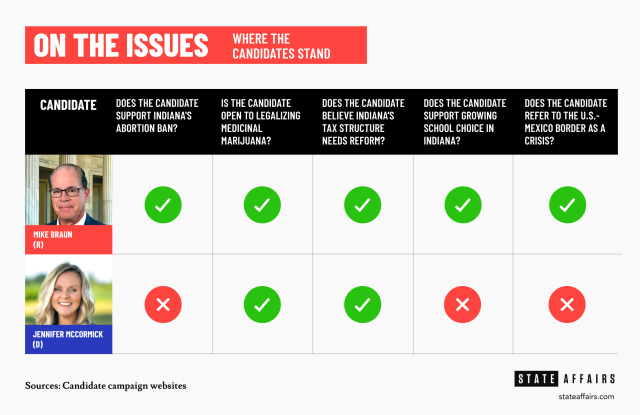
Contact Rory Appleton on X at @roryehappleton or email him at [email protected].
Spartz, Shreve, Stutzman win Republican congressional primaries
A central Indiana congresswoman successfully fought off eight primary challengers, while crowded races for three other Republican-leaning congressional districts began to clear in Tuesday’s primary election. And in northeastern Indiana, a former congressman held on in a tight race as he seeks to return to Congress. All of the state’s nine U.S. House of Representatives …
Mike Braun wins the Indiana Republican nomination for governor
U.S. Sen. Mike Braun was declared the winner of the Republican gubernatorial nomination shortly after polls in Indiana’s Central Time Zone closed. With 98% of votes counted as of Wednesday morning, Braun had 39.6%, followed by Lt. Gov. Suzanne Crouch with 21.8%, Brad Chambers with 17.5%, Eric Doden with 11.9 %, Jamie Reitenour with 4.8% …
Here’s how to vote in Indiana’s primary election
Thousands of Hoosier voters will head to the polls Tuesday, May 7, for Indiana’s primary election. This year’s ballot includes a competitive contest for governor, as well as dozens of state and federal legislative races and a few school referenda. The primary will decide which candidates will represent their respective parties in the Nov. 5 …

